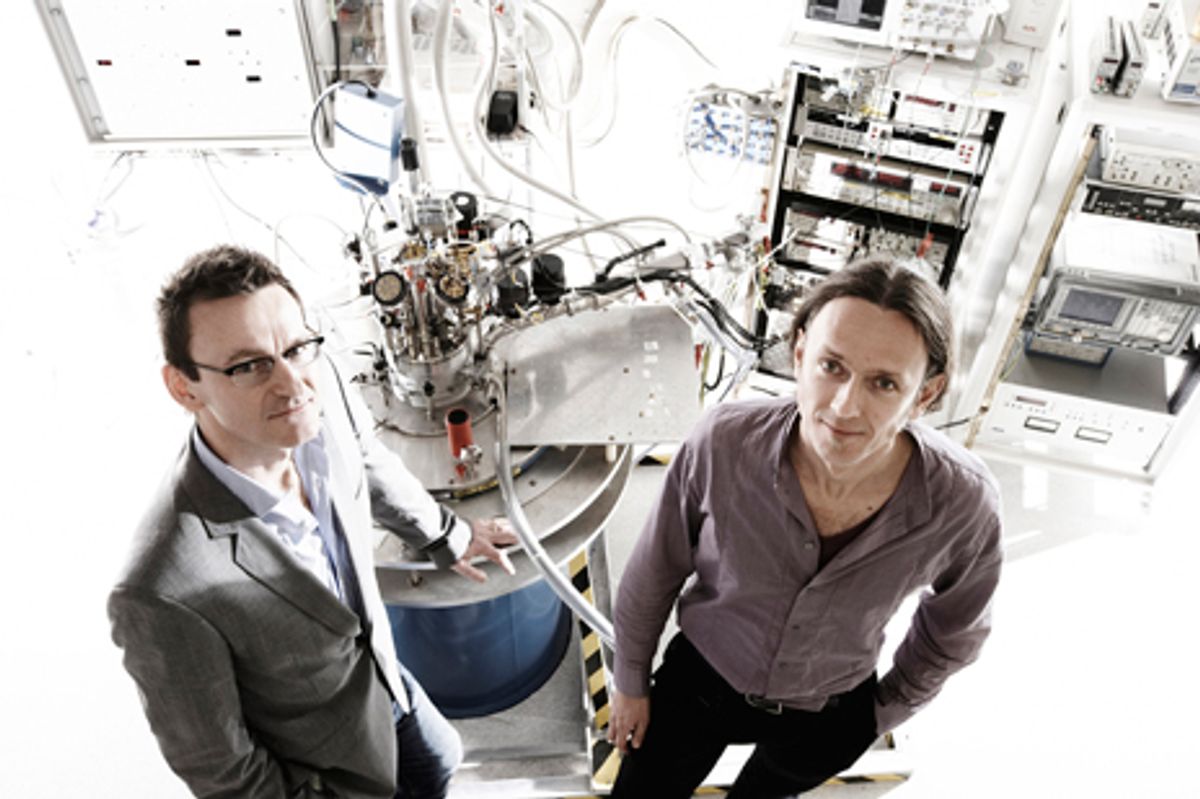6 October 2010—In a triumph of experimental physics, a team of scientists led by Andrea Morello and Andrew Dzurak of the University of New South Wales, in Australia, report that they have managed to detect the magnetic state, or spin, of a single electron in a silicon chip. This is the first time that such a feat has been accomplished, and it is a promising step toward the development of silicon-based quantum computers, say the scientists.
Quantum computers, in contrast to those you use every day, seek to harness the laws of quantum mechanics to speed up calculations. These still-experimental machines hold out the promise of doing in seconds certain tasks that would take conventional computers years to complete. Quantum computing is a relatively new field, however, and only rudimentary machines have been built so far. Part of the problem with building large quantum computers is that large quantum systems do not hold information for long; they rapidly "decohere," in the parlance of quantum mechanics.
The most advanced approaches to quantum computing seek to create qubits—as quantum bits are called—by using ions of cold gas trapped in a confined space, superconducting junctions, or optical systems. However, because of decoherence, these approaches are thought to be hard to scale up to the hundreds of qubits needed to build quantum computers that could rival powerful conventional computers. In 1998, the physicist Bruce Kane, then at the University of New South Wales, suggested a type of quantum computer that could be implemented in a silicon chip doped with phosphorus, which could therefore be scaled up relatively easily. Kane’s idea involved using the nuclear spin of the phosphorus donor atom as the qubit.
The Australian team was motivated by Kane’s proposal. "Silicon is clearly the dominant material system for current integrated circuits, so the ability to utilize the past decades of knowledge and investment in silicon manufacturing is of enormous benefit if one is to develop a commercially viable technology," says Dzurak. But the team chose to investigate the spin of electrons instead of the phosphorous nuclei. "Electron spins in silicon have very long coherence times compared with other comparable solid-state approaches," Dzurak says.
Scientists have been able to measure the charge of a single electron since the 1990s by using experimental devices called single-electron transistors. Sensing the spin of a single electron is much tougher, however, because it is extremely difficult to measure such a minute magnetic moment directly. Instead, it was necessary to convert the spin measurement into a "charge transfer measurement," Dzurak says.
To do this, the team created a test semiconductor device on a very high purity silicon substrate by implanting phosphorous atoms in nanoscale patterns. The team coupled the test device to a metal-oxide semiconductor single-electron transistor built nearby on the silicon. The resulting combination of devices allowed the physicists to get the spin state of the electron to control the flow of charge in a nearby circuit and produce a digital readout.
"Until this experiment, no one had actually measured the spin of a single electron in silicon," says Morello.
But reading the spin state of the electron is only one part of quantum computing. You need to be able to write as well. The researchers say the next step they are pursuing is to make a single electron writer and combine it with the reader. Many challenges still remain. "Single-atom engineering is obviously not easy," says Dzurak.
In addition, "they will need to couple two qubits together to do simple quantum logic," says Kane, who is now at the University of Maryland, in College Park. "The work they have done is a big step forward for achieving quantum computing in silicon, but they still have a long way to go."
About the Author
Saswato R. Das is a science reporter in New York City. In May 2010, he explained the workings of a weird molecular computer that mimics some aspects of brain computation.
Saswato R. Das writes about science and technology and is a spokesman for Lucent Technologies' Bell Labs in Murray Hill, N.J. His background is in physics.



